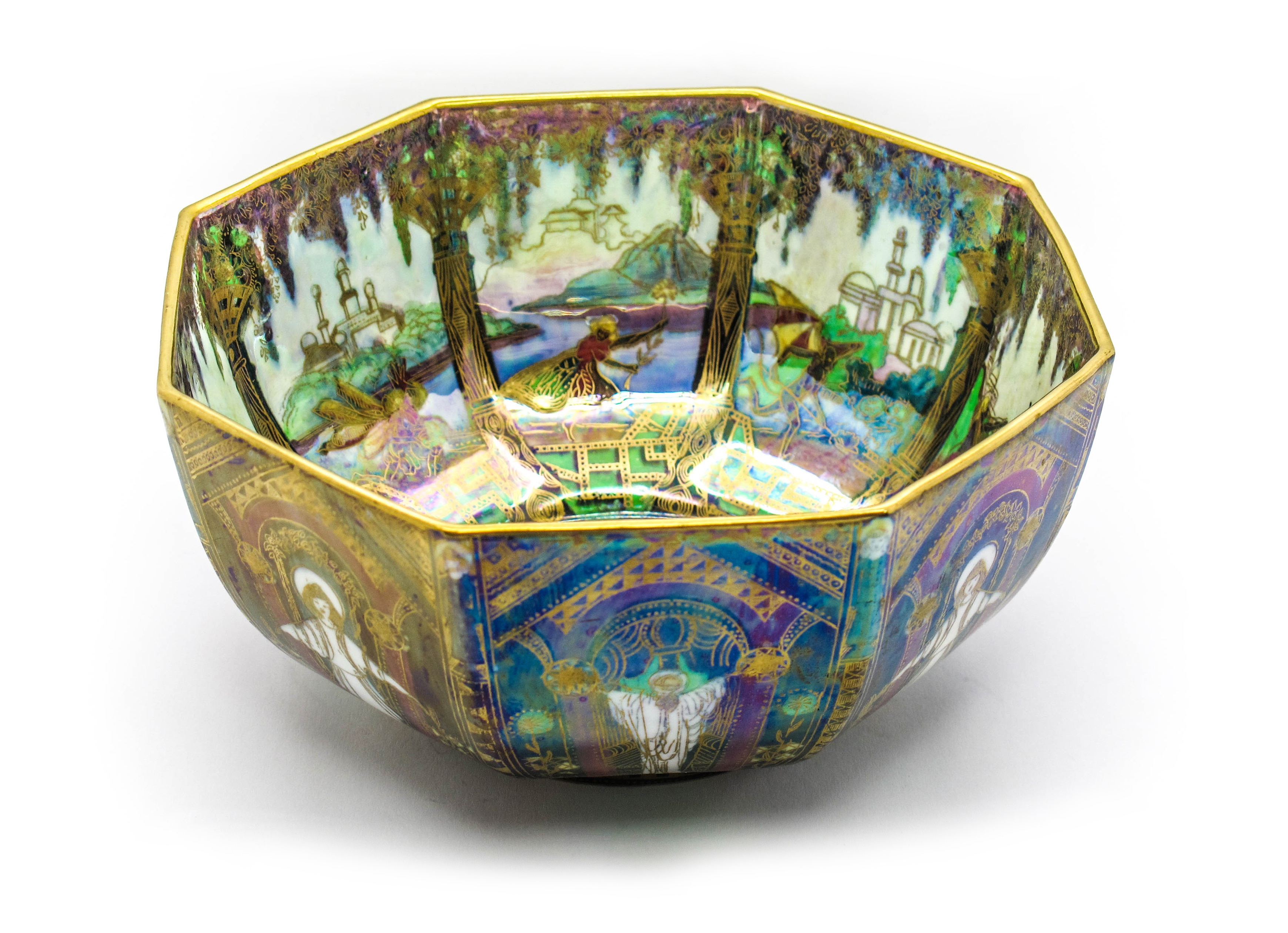Fairyland Lustre
Susannah Margaretta ‘Daisy’ Makeig-Jones was the designer....
05/12/2024 Blog
I am always drawn to the brightly coloured ceramics from the 1920’s and my favourite pieces are the “Fairyland Lustre” wares produced by Wedgwood.
Susannah Margaretta ‘Daisy’ Makeig-Jones was the designer responsible for hugely successful Fairyland range which was produced from the 1920s until Makeig-Jones left the company in 1931.
Makeig-Jones, nicknamed Daisy was first taken on at Wedgwood as an apprentice in 1909 before becoming a designer in 1912. She grew up in rural Yorkshire and her childhood filled with stories of myths and legends is believed to have inspired many of her designs alongside the work of children’s illustrators like Edmund Dulac and Kay Nielson. Her rich colours and gold decoration is representative of old oriental porcelain.
The designs contained beautiful landscapes with mythical creatures such as goblins, ghosts, fairies and elves and were a huge contrast to the more traditional Wedgwood styles of the time but still achieved huge commercial success. Many people believe that the designs appealed to the public’s desire to remember a more innocent age following the horrors of the First World War.

The value of Fairyland Lustre depends largely on the condition of the pieces but earlier examples are more sought after as Daisy Makeig-Jones decorated these herself, before she took on a more supervisory role.
The patterns are characterised by rich gold lustre a technique that used a mixture of metallic oxide pigments suspended in oil and painted onto the surface of earthenware. Decoration was applied in stages by a team of women and girl painters. When the pieces were fired the metal reduced and formed a thin shiny, reflective film with gave an iridescent effect but this complex manufacturing often needed up to six firings for some designs. The technique meant that Fairyland Lustre was very costly to produce and therefore expensive to buy but that didn’t affect its popularity with collectors either at the time or today.
The pieces are always marked with the distinctive Portland vase mark and the words Wedgwood and Made in England and are usually accompanied by a pattern number commencing with a Z.
Prices at auction range from just a couple of hundred pounds to several thousand pounds with larger pieces particularly plaques being the most collectable. As always try and buy pieces in good condition with no restoration or damage. Myself and the team here at Sheffield Auction Gallery are always available to help and answer any questions you may have.